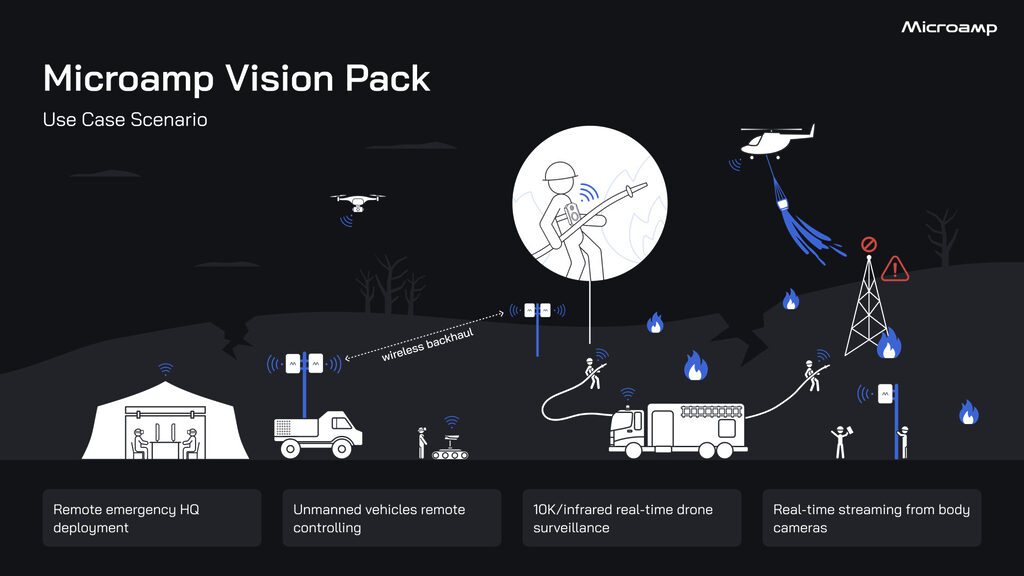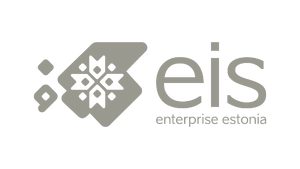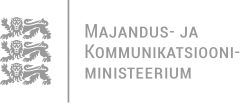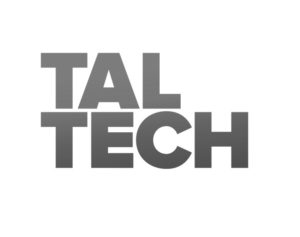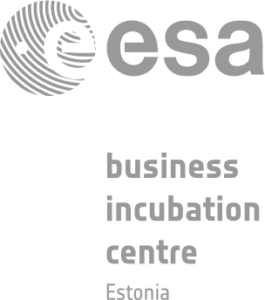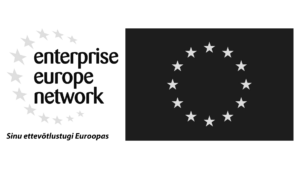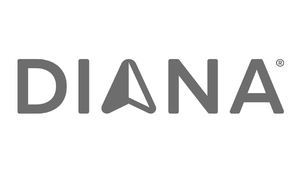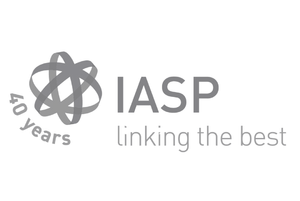Startup Story: ResQuant X NATO DIANA Estonian Accelerator
ResQuant develops quantum-resistant security solutions for IoT devices* – protecting them not only from today’s cyber threats but also those posed by tomorrow’s quantum computers. At the heart of the offering is a silicon-based Root-of-Trust chip that safeguards data and communications at the hardware level. Aligned with the post-quantum cryptographic (PQC) standards defined by NIST and endorsed by the European Union, ResQuant’s technology is designed to comply with upcoming 2030 requirements for critical systems.
The company’s origins are deeply rooted in national defence and global telecom. Michał Andrzejczak, ResQuant’s CTO and Founder, is a seasoned cybersecurity expert with 14 years of service in Poland’s cyber defence forces. His PhD research at the Polish Military Academy laid the foundation for the company’s technology, although much of his past work remains classified.
Joining him is Sven Zagala, CEO and Co-Founder, who brings a strong commercial edge. A former executive at Motorola and Harris Stratex, Sven managed operations across 22 Central and Eastern European countries. After successfully running his own company and spending five years as a startup mentor and angel investor, he joined ResQuant in 2023 to drive it from deep-tech vision to market-ready product.
How was the startup idea born?
The idea for ResQuant emerged during the COVID-19 pandemic, when Michał began exploring ways to commercialise the findings from his doctoral research. He bootstrapped the initial development between 2020 and 2021. The startup gained traction after receiving its first pre-seed investment in 2021, transitioning from a research project into a viable company.
What has been your biggest challenge/obstacle/largest win so far?
The company faced a major hurdle in 2023 when the initial CEO struggled to scale with the startup, pushing ResQuant toward collapse during what is often called the “valley of death” stage. This was overcome when Sven assumed the CEO role, successfully attracting funding and steering the company forward.
That pivot proved successful. By late 2024, ResQuant had secured a €185,000 contract with the European Space Agency — a major validation of its technology. The momentum continued when the startup was selected for the NATO DIANA accelerator in December 2024, reinforcing its position as a key player in the emerging field of dual-use, quantum-safe security solutions.
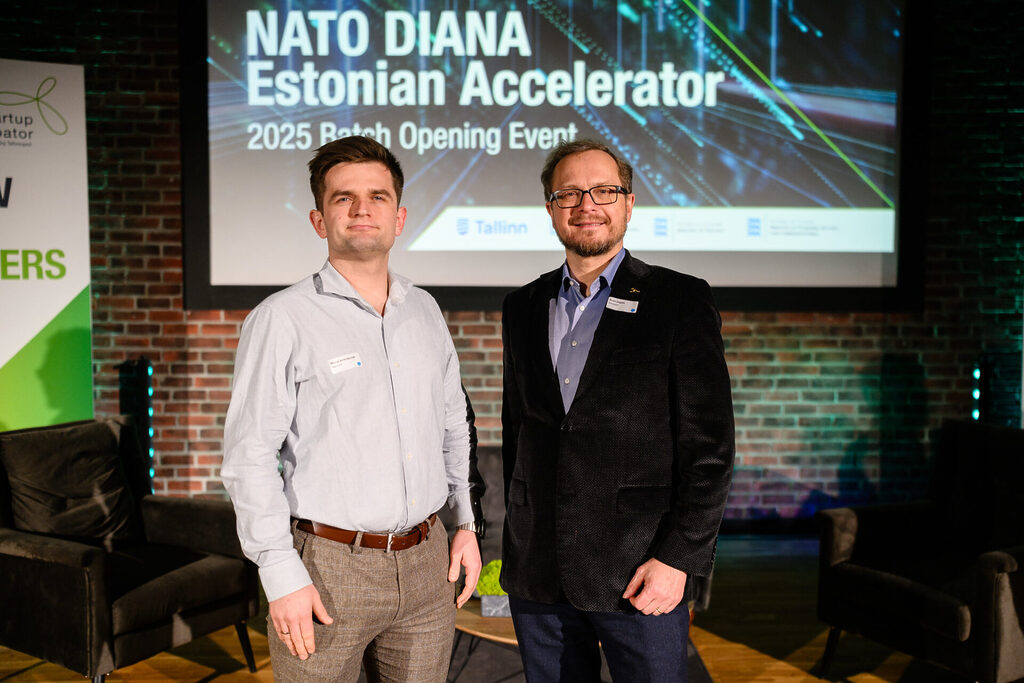
What differentiates your company from the competition?
What sets ResQuant apart from the competition is its strategic approach to building accessible, trustworthy, and scalable solutions. With a strong dual-use focus, the company designs products that serve both civilian and military applications, addressing critical infrastructure needs across sectors.
Why did you apply to the NATO DIANA accelerator?
Given our strategic emphasis on dual-use technology, NATO DIANA represents a perfect alignment with our mission. Participation in the accelerator is a key part of our growth strategy and validation in the defence technology ecosystem.
Where do you see your company in 12 months? How about in 5 years?
In 1 year: Our goal is to produce silicon-proven, certified chips embedded with our IP, ready to be deployed in multiple dual-use proof-of-concept scenarios.
In 5 years: We envision billions of IoT devices incorporating our chips, forming a global standard for quantum-safe security. These devices will not only be protected against quantum threats but will also generate new revenue streams through secure updates and services.
Who will be the next unicorn in Estonia or in your home country of Poland?
The future Cybernetica and Resquant PQC Joint Venture, of course!
The Estonian accelerator is implemented by Tehnopol Startup Incubator together with Sparkup Tartu Science Park.
* An IoT device is a smart object that connects to the internet and shares data, like a smart watch or home thermostat.
Startup Story: Litegrav x ESA BIC Estonia
Litegrav is pioneering a new approach to biological innovation by utilizing the unique conditions of space environments, such as microgravity. These extreme environments offer powerful opportunities to optimize biological processes — from fine-tuning disease and aging models to improving the structural quality of cells. Litegrav’s intelligent bioreactor system enables systematic testing and development of new therapies, specialized cell types, and resilient agricultural plants and microbes – on ground.
The company was founded by Patrik Hollós, PhD in neurobiology, who has a strong background at the intersection of academia and industry, spanning research commercialization, biotech venture capital due diligence, and innovation advisory. Litegrav’s growing team of eight experts combines competencies in computer engineering, mathematics, bioengineering, and business development, bringing together both scientific excellence and industry experience.
Litegrav is an alumnus of the ESA BIC Estonia programme, and Patrik Hollós shared some insights into the company’s activities.
What inspired you to launch a space tech startup?
My own research. I have been facing the problem that we had a possible therapeutic finding that needed to be tested and optimized in space-like conditions, but solutions were very limited and expensive. When we started to talk to industry, we realized that everyone sees the big potential, but no one had progress with current systems.
What have been your biggest challenges and failures so far, and what are your biggest wins?
The biggest challenge is also the biggest win: We developed a platform, so it can be really used for many verticals. The challenge is that we do not get sidetracked and stay laser-focused on use cases where we see both solid proof of concept evidence and commercial opportunity. Failures come through learning, what I mean is that I realize an action is failure sometimes years later. This mainly relates to some hard go/no-go decisions regarding development and focus. Also, a big win that we are getting more recognized internationally, and able to partner with companies like the Korean pharma company Boryung, or working with a NASA GeneLab group to predict and optimize biology experiment outcomes from the SpaceX FRAM2 mission that might translate to dual-use medicines.
What drives you to keep going, even on tough days?
My family and ability to recall what “gut feeling” means. Most successful decisions in my life were a combination of analysis and gut feeling, and if I look at our vision, I get the gut feeling that we are on the right path. Some acceptance that the “baseline” of a startup is just heavy waves, can help too.
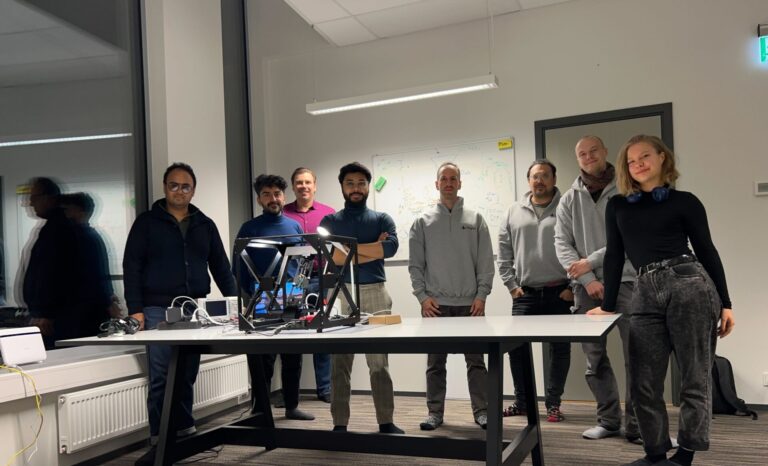
What sets your startup apart from competitors in the space industry?
Although our underlying technology comes from space and simulated space environments, we are truly Earth-focused and “Earth biology” focused. We exploit findings and artefacts that are often found in replicating space biology conditions. We find “space” in Earthy processes where no one was looking for “space”.
Why did you choose to apply to ESA BIC Estonia?
Our project’s academic R&D roots were in Finland. We decided to apply for ESA BIC Estonia as the funding scheme looked more straightforward and we also heard good things about some rapid prototyping capabilities. This turned out to be true, although we had to iterate a lot; focusing on doing and building right from the start helped a lot.
What’s your vision for your startup in the next year? And where do you see it in five years?
We are now in the process to get some large industry names with us to be the first choice for their testing. This includes large consortia building next-generation space stations for biotech and material science discovery to benefit both Earth and future deep space explorations.
Who do you think is the next (Estonian) space tech unicorn?
Too early to tell. Also, we need more bolder space tech ideas to bloom — the talent is around, the money and global situation not so much at the moment.
Which books, podcasts, publications, and influencers in space technology or entrepreneurship do you follow and recommend to others?
Spaceinsider is probably well known and they do a lot of good reports. I’m happy to receive book and podcast recommendations about spacetech. The influencer space is probably noisy, I think after a while everyone can filter people who disseminate relevant info to their fields.
What advice would you give to the future candidates?
Just go for it, and come in also with quantum, mining, materials science, biotech, propulsion, payload return — spacetech is not just satellite data.
ESA BIC Estonia, led by Tartu Science Park in collaboration with Tehnopol, is part of the European Space Agency’s network of business incubators across Europe. It helps innovative Estonian startups bring space technologies to new markets, offering up to 60,000€ in product development support, specialised mentoring, international network access, and business development loans.
If you are working on a space-related innovation, the current application round is open until May 8th! Learn more here https://www.esabic.ee.
Unique microphone solves audio recording challenges: Startup in Film and Multimedia Accelerator aims for international success
Raimonds Skuruls, a sound technician and engineer from Latvia, is participating in the Tehnopol’s Film and Multimedia Accelerator with his startup Acoustic Power Lab. He has invented a one-of-a-kind microphone with no analogues, is ready to recruit marketing specialists to his team, and is preparing to enter major international markets.
Raimonds has years of experience as a sound director both in concert halls and studios, along with a background in developing and assembling the necessary equipment for such work, and in tools for measuring and tuning speakers in both settings.
“When a sound technician works with a microphone, they must make a real effort to achieve a perfect recording. What do they always try to do? Place the microphone as close to the performer as possible. And when we try to do that, we see how a studio recording, for instance of a large symphony orchestra, fills up with countless microphones and stands. It’s like a forest of microphones,” Raimonds explained.
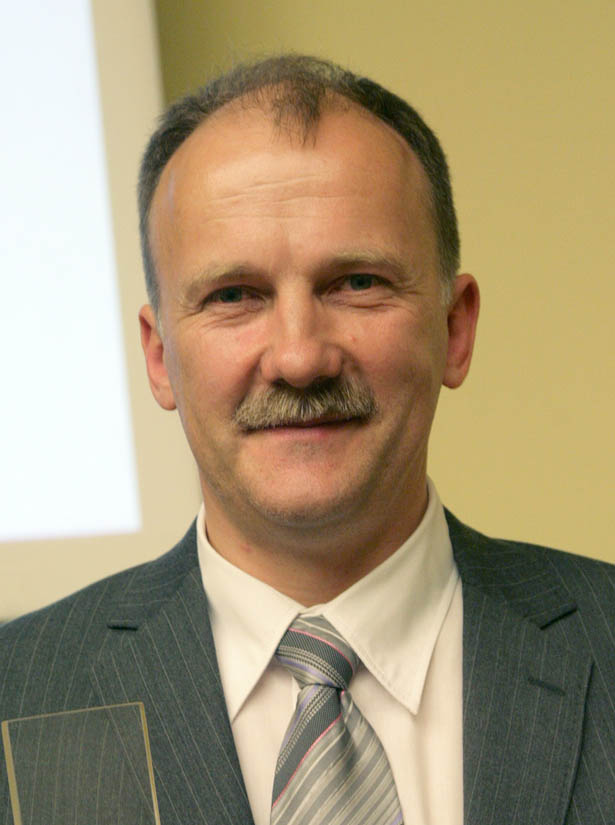
Achieving high-quality results requires a great deal of experience and qualifications, and even then, he says, success is not guaranteed. “It’s a completely different experience when we listen to such an orchestra with our own ears — say, from the front row. We enjoy the depth of the performance and the nuances of sound. But as soon as we place a microphone in that same spot, record it, and then listen back, we realize the recording is unusable — the sound quality is just too poor,” he described the problem many sound engineers face.
According to Raimonds, the challenge of achieving high-quality sound becomes even more pressing when a concert also needs to be filmed. In such cases, the visual director suffers too — obstructed by the “forest” of microphones.
Having clearly identified the problem, Raimonds invented a microphone that turned out to be a real breakthrough. “This microphone has an unusually sharp focus, which defines its features and technical parameters. At the same time, modern signal processing methods allow us to remove the sound issues caused by its physical structure and produce a very natural, high-quality audio. It captures the full sound of the orchestra while maintaining a natural balance, and the result is very close to what we hear with our own ears,” Raimonds explained.
He didn’t just invent and assemble the microphone — he also tested the product and sold his first batch to a rather demanding customer who ended up satisfied.
“The Latvian National Symphony Orchestra agreed to let me record a live concert with my device. The concert featured Gustav Mahler’s Third Symphony, and despite all sorts of technical challenges, the entire 90-minute performance was recorded with such quality that, as a sound engineer, I wasn’t ashamed to listen to it,” Raimonds said. The reaction to the recording was so strong that the listener was left literally speechless.
Since there is no equivalent product on the market, Raimonds decided to launch his project as a startup. So far, there has been no public advertising or active sales. “I’ve been showcasing it in a closed setting to acquaintances, friends, and potential clients. But participating in Tehnopol’s accelerator helped me realize it’s time to move forward.”
Raimonds emphasizes that the goal is to enter major international markets right away — there’s no plan to start locally, such as with the Estonian market. That’s why he’s looking for a specialist with expertise in business development, sales, marketing, and the startup ecosystem. Ideally, this person would also understand the audio industry, its functions, and market dynamics. Raimonds already has connections with potential early buyers; he met one of them — a European producer — while testing his microphone in more demanding conditions.
“After recording with the Latvian orchestra, I started talking to radio and television, saying: ‘I have this microphone, we can give it a try.’ Then came the moment when a radio station recorded a Latvian National Symphony Orchestra concert together with television. It was a trial. I set up my microphones alongside the ones used by TV and radio. I saw how the producer struggled to hide the stands — it’s vital to get the perfect picture, not just great audio. I arranged my setup so it was completely invisible and didn’t interfere with anyone — not the cameras, nor the orchestra,” Raimonds recalled.
When the trial was over, the producer came to him and said they were interested in the microphone.
What does Raimonds gain from participating in Tehnopol’s Film and Multimedia Accelerator? “Contacts, constant interaction with the right people. That’s extremely valuable. I’ve immersed myself in the industry and realized that, for investors, it’s still a bit ‘green’ — the product needs refinement, and everything must be approached strategically. But it’s time to bring the product to market,” Raimonds concluded.
KindelAI brings a revolution to vehicle repair diagnostics
In vehicle repair workshops, a considerable amount of time is often spent identifying faults in vehicles. Estonian startup KindelAI is developing AI-based software that can accelerate vehicle diagnostics by up to 200 times. This solution not only improves workshop processes but also demonstrates how artificial intelligence can transform an entire industry.
Co-founder Indrek Reimann shared the challenges they have overcome and their ambitions for the future.
How did KindelAI begin?
“I have worked in the vehicle repair industry my whole life, and for the past 13 years, I ran my own workshops. Throughout my career, I constantly encountered diagnostic issues and saw a clear need for a more efficient solution. Our co-founder and CTO, Andrei Aksjonov, researched similar problems during his PhD and postdoctoral studies, developing various AI-based technologies.
We have been testing several solutions together for a couple of years, but alongside our day jobs, progress was limited. Last autumn, after joining the Tehnopol Startup Incubator, we left our previous commitments behind, and the company’s development gained rapid momentum: with the support of mentors, we pivoted, refined our focus, and within a few months moved from idea to product, which is now being used by our first clients in the US market.”
What were your expectations when joining the Startup Incubator?
“This is my second time at the Startup Incubator. When building my first startup, I did not fully utilise all the opportunities the accelerator had to offer. This time, our approach is completely different – we are making the most of it right from the start, seeking out contacts, speaking to everyone, and actively using all the resources available through the programme.
The Estonian startup community is small, and much of it is centred around Tehnopol. For us, moving into a better environment and being closer to valuable contacts has been of great benefit.”
You have begun raising investment. How is that going?
“Optimistically and actively. We have already spoken to several dozen investors, and we have secured our first interested parties, who we keep regularly updated on our progress. Considering we only started recently, the initial feedback has been positive.”
Where will the investment be directed?
“Our goal is to raise €1.2 million to expand our team and accelerate product development. We urgently need top specialists in the rapidly growing GenAI sector to enhance our product’s capabilities and to continue expanding our customer base in the US market. Developing GenAI solutions also brings significant cloud costs – since we are not dependent on APIs or any specific GenAI model, running our solution requires substantial computational power.”
Are you recruiting internationally?
“Yes, most of the AI specialists we have spoken to are from abroad. There simply are not enough experts in this field in Estonia, so we are looking internationally. Some of them have already joined our team.”
How easy has it been to explain to investors that KindelAI is future technology?
“As the number of companies working with this type of technology increases globally, we are seeing that investors also understand its value and are willing to invest. However, our region has its limitations, which is why we are also open to investment from outside Estonia.
Explaining the technology has not been easy, but similar startups have achieved tremendous success – some have become unicorns in less than a year. GenAI startups have shown that with much smaller teams than traditional SaaS companies, they can achieve results that break all previous growth and revenue records.”
Where do you see KindelAI in five years’ time?
“In five years, we aim to be a strong player in both the US and European markets. It is also possible that by then we will have sold the company. Given the rapid development of AI, KindelAI could look very different within just a few years.”
Are you open to changing your business direction?
“In the world of startups, you must be flexible. If we see an opportunity to support the sector more broadly, we are ready to adapt. Our mission is to solve real problems and to bring innovation to the vehicle repair industry.”
How have customers and test users responded to the KindelAI solution so far?
“Very positively! They have long been waiting for a solution to this problem. Recently, we tested our solution with customers in the US, the UK, Estonia, and Finland, and gathered valuable insights on how to move forward. Many clients have found us independently, most likely through Google, which shows that the need for such a solution is real.
Our biggest progress and future focus are in the US market, where we have quickly found active early adopters, and where the receptiveness to AI products is significantly better. From the customers’ perspective, the key point is making workshop processes faster and more efficient – and that is exactly what KindelAI delivers.”
Estonian startup Wayren raises €7.9 million to develop an innovative communications system for the soldier of the future
Estonian startup Wayren, founded by former cyber defence experts, has signed a €7.9 million strategic investment agreement with EFA GROUP, one of the world’s leading defence industry conglomerates. The goal is to jointly develop next-generation high-tech digital battlefield systems that connect soldiers, drones, vehicles, and weapons into an integrated situational awareness solution. Wayren has previously received funding from Prototron, graduated from the Tehnopol Startup Incubator, and is currently part of the NATO DIANA accelerator programme in Estonia.
“Today’s battlefield is a complex and dynamic environment where singular equipment and training alone are no longer enough. To gain a decisive edge, digitalisation is essential – enabling real-time data collection, processing, and sharing, which significantly accelerates decision-making. Most current tactical communication systems struggle in extreme conditions as they’re not reliable enough for last-mile environments. Our systems are built to function even when everything else fails,” said Henry Härm, CEO and co-founder of Wayren.
Wayren’s proprietary Singularity communication platform enables resilient communication between soldiers, command units, and various platforms under demanding battlefield conditions. The patented system establishes a reliable hybrid mesh network to connect units, vehicles, and command posts, synchronising data simultaneously via any available civil or military communication technologies – such as mobile, satellite, or radio networks.
A central role in this strategic partnership between the two defence innovators is played by SCYTALYS, a member of the EFA GROUP. SCYTALYS develops advanced, modular, and interoperable battle management systems designed to meet the complex multi-domain challenges of modern armed forces.
According to George Menexis, CEO of SCYTALYS, this collaboration sets a new benchmark for fully interoperable and flexible multi-domain operational capabilities.
“Our proven Mission Information and Management System (MIMS), combined with Wayren’s resilient frontline communication innovation, delivers next-generation connectivity and coordination capabilities for today’s network-centric operations. The Common Operational Picture (COP) remains continuously synchronised across all connected forces, built on a robust communications architecture that maintains operational continuity, even in degraded environments. By integrating THEON International’s cutting-edge night vision and augmented reality technologies, we ensure comprehensive situational awareness and tactical superiority for deployed units,” Menexis explained.
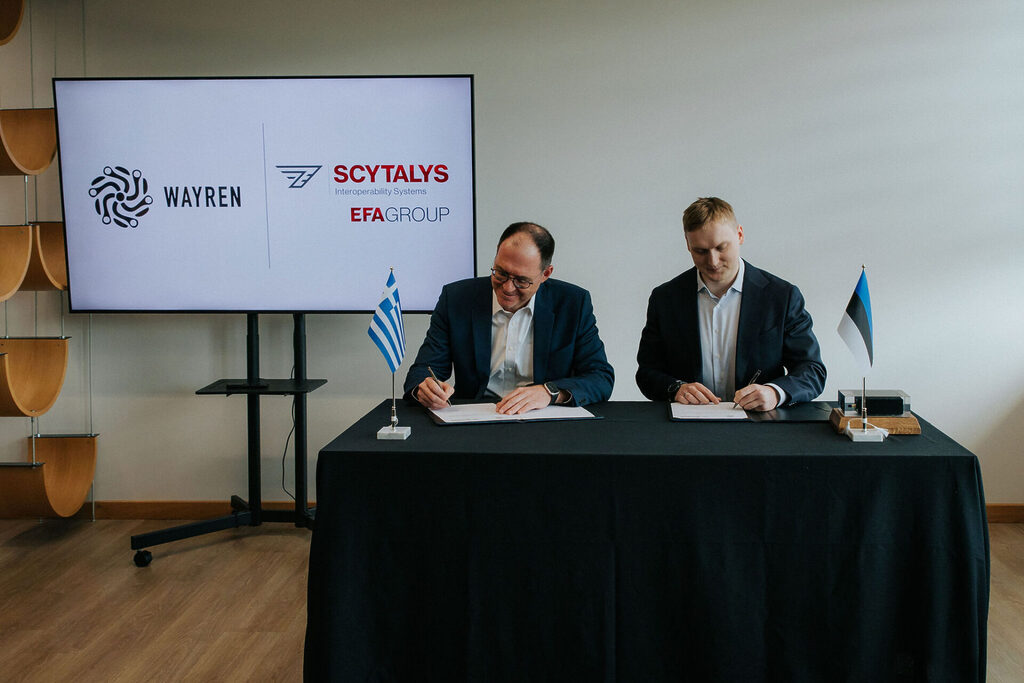
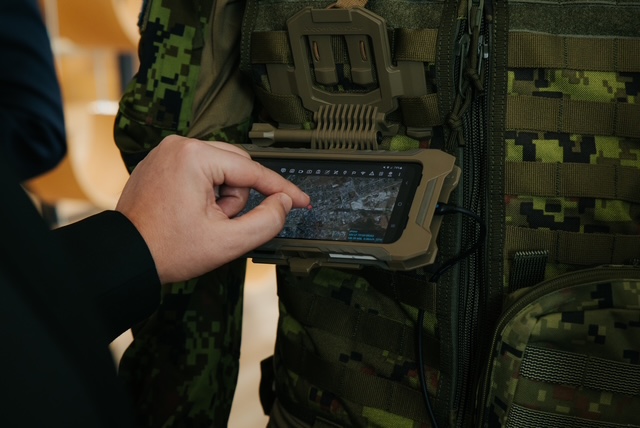
Wayren’s platform forms the backbone of the modern battlefield – from sensors to AI-powered analytics and situational awareness systems. The solution ensures that critical data reaches its destination even in heavily disrupted, low-bandwidth, or unstable network environments.
The system has already been delivered as a pilot project to the Estonian Defence League and is currently being actively tested by both the Estonian Defence Forces and the Ukrainian Armed Forces.
“Close cooperation with the defence forces has allowed us to significantly improve the usability and reliability of the system in real combat conditions. Their valuable feedback, combined with our extensive testing, gives us confidence that the product is ready for full-scale deployment and government procurement. Estonia and Ukraine are our first key customers,” explained Henry Härm.
In addition to its military applications, Wayren sees considerable potential for its Singularity communication platform in civilian sectors. In the future, this could even become the company’s main business focus. The technology can enhance operational efficiency and situational awareness in mission-critical fields such as mining, law enforcement, rescue services, industry, and more.
Wayren was founded five years ago by three former cyber defence personnel – Henry Härm, Oliver Tiit, and Tarmo Aia. Full-scale development began in 2022 when the company received development support from the Estonian Ministry of Defence. Funding has also been provided by the European Defence Fund. In 2023, the company raised €725,000 from private investors to support the development and testing of the pilot project. The investment round was led by BSV Ventures, with participation from DEPO Ventures and several angel investors, including Taavi Veskimägi, Chairman of the Supervisory Board of the Estonian Defence Industry Association. Wayren was also recently selected for the NATO DIANA accelerator programme in Estonia.
EFA GROUP is a global aerospace, security, defence, and industrial cooperation group headquartered in Athens. SCYTALYS, founded in Greece in 1993 and part of EFA GROUP, specialises in the development of mission-critical software and systems integration. Its key partner is THEON International, one of the world’s leading developers and manufacturers of night vision, thermal imaging, and augmented reality systems. Together, they are pioneering solutions for the “soldier of the future.”
Dual-use, real impact: What happened at DIANA Estonia’s latest onsite
The fourth onsite of the NATO DIANA Estonian Accelerator wrapped up last week, bringing together startups from across the alliance as this time, we didn’t go at it alone. The April session was a collaboration between the NATO DIANA Danish and Estonian accelerators, offering a stronger collaborative effort and real-world engagement between the two.
This edition was brought together our lucky seven – ResQuant, Telearmy, Wayren, IS-Wireless, Scaleout, Factiverse and Microamp – as well as six companies from the DIANA accelerator site in Denmark, hosted at the BioInnovation Institute in Copenhagen: 52North (creators of Neutrocheck®), Cogitat, Sensible Biotechnologies, Alea Quantum Technologies, CUbIQ Technologies and Quantropi Inc. While associated with their respective accelerator sites, the participating companies represent a diverse range of countries and specialisations.
The week kicked off at the e-Estonia Briefing Centre in Tallinn with a no-nonsense panel on what not to do as a dual-use startup. Glen Kelp from GaltTec and Silver Lodi from Spaceit shared honest reflections from their journeys, sparking a lively and practical discussion that set the tone for the days ahead.
After morning matchmaking and networking, the group travelled to Tartu to meet with the Centre of War and Disaster Medicine at the Estonian Military Academy – a key stakeholder in testing and scaling defence-relevant technologies. This mix of Tallinn’s tech-forward mindset and Tartu’s defence expertise reflects the balanced approach of the Estonian accelerator, which is delivered by Tehnopol Startup Incubator in partnership with Sparkup Tartu Science Park.
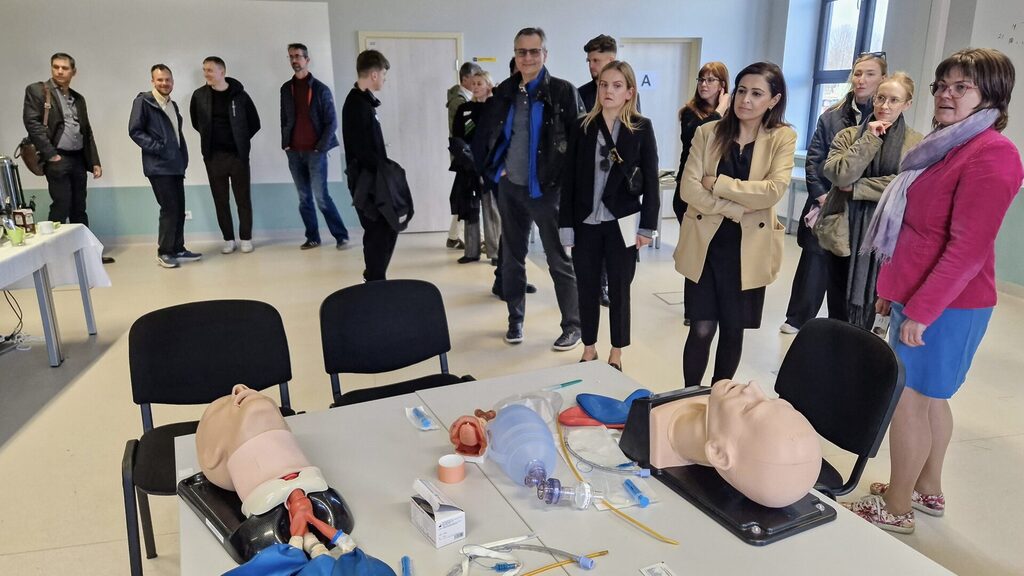
Days two and three were all about skill-building, with teams diving into workshops designed to prepare them for high-stakes moments – from pitching to NATO end-users to navigating defence-specific communication and go-to-market strategies. These sessions weren’t just about theory, they were about preparing for moments that matter, like pitching to NATO end-users or adapting commercial tech to serve military and security contexts.
Kudos to Nicholas Hawtin, Lisbeth Holdt Jørgensen, Rainer Saks, Raimond Kaljulaid, Katrin Kiviselg, Gleb Maltsev, and Raido Saremat for sharing your expertise and supporting the NATO DIANA teams on their journey!
One of the key highlights of the week was a visit to Tapa Army Base, where startups presented their solutions to representatives from the Estonian Defence Forces and NATO’s Enhanced Forward Presence (eFP). Following an operational briefing, the companies delivered concise three-minute pitches demonstrating how their technologies could support both national and allied defence efforts.
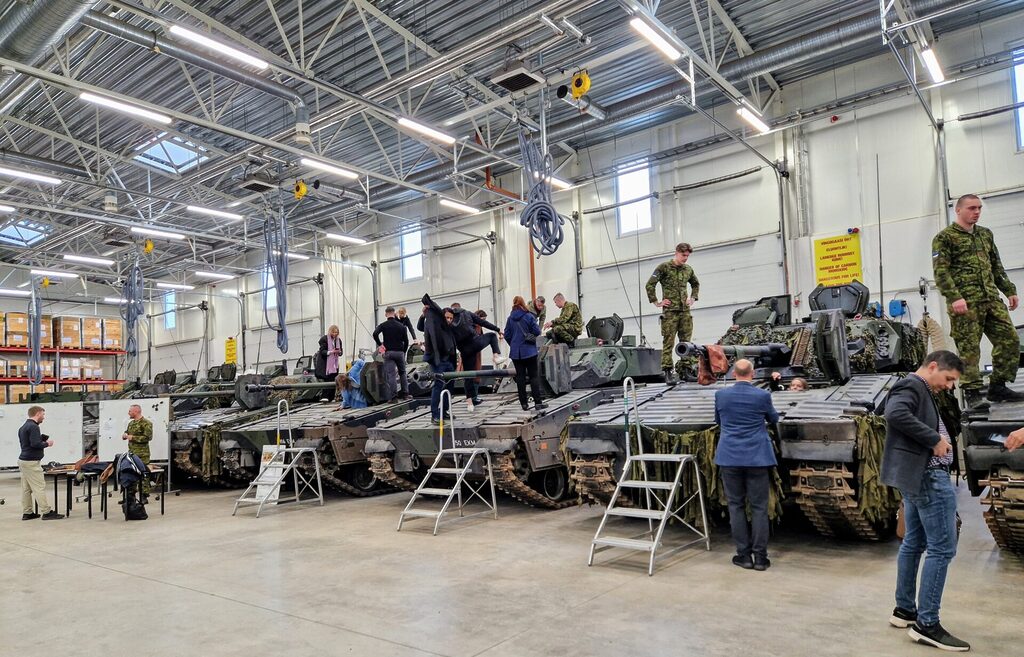
Adding to the international reach of the programme, we were pleased to welcome Loren Bailey, project lead at COVE, which hosts the Canadian DIANA accelerator focused on marine technology. Loren joined the onsite to foster stronger collaboration across the growing DIANA network.
This kind of cross-site exchange between teams affiliated with Estonia, Denmark and Canada – underscores the global nature of both innovation and security challenges. It also demonstrates our commitment to building a truly international ecosystem of problem-solvers, capable of responding to NATO’s most pressing capability needs.
As the teams returned to Tallinn to conclude the programme, one thing stood out: collaboration fuels progress. Whether refining a pitch, engaging with end-users, or navigating the complexities of dual-use markets, the momentum built during this onsite will continue to drive innovation forward.
Next up? The May onsite in Tallinn, including booths and pitches on the Latitude59 stage.
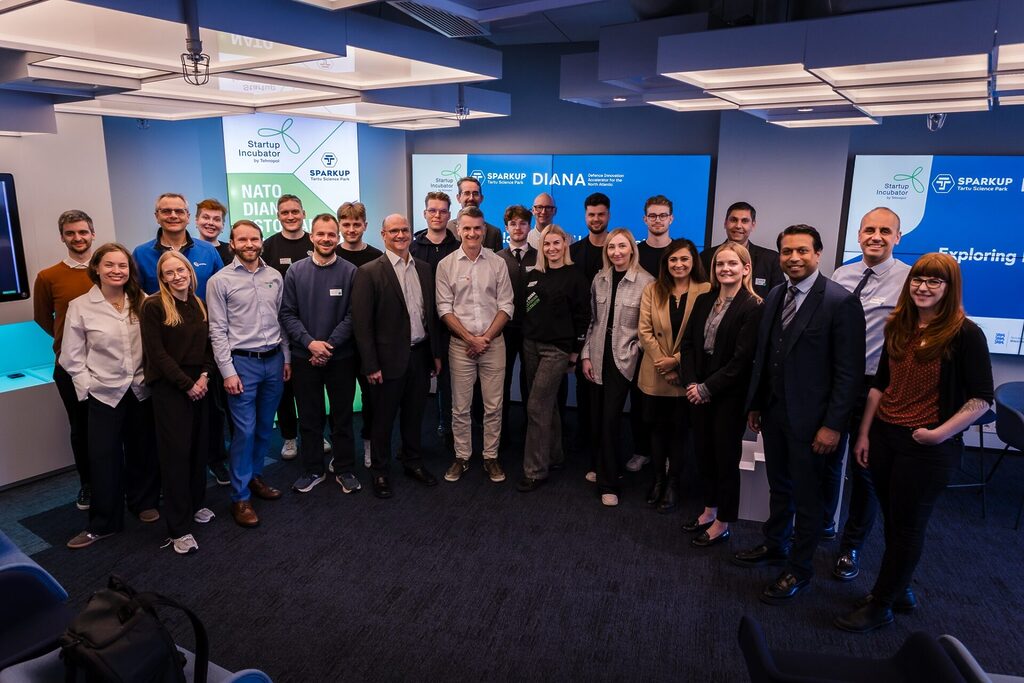
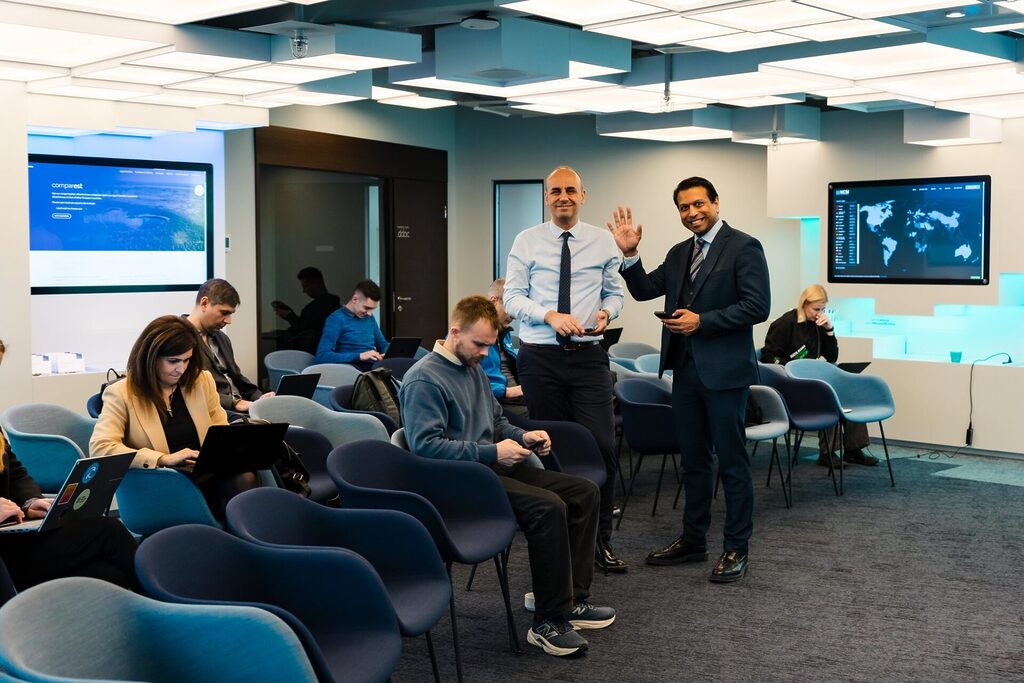
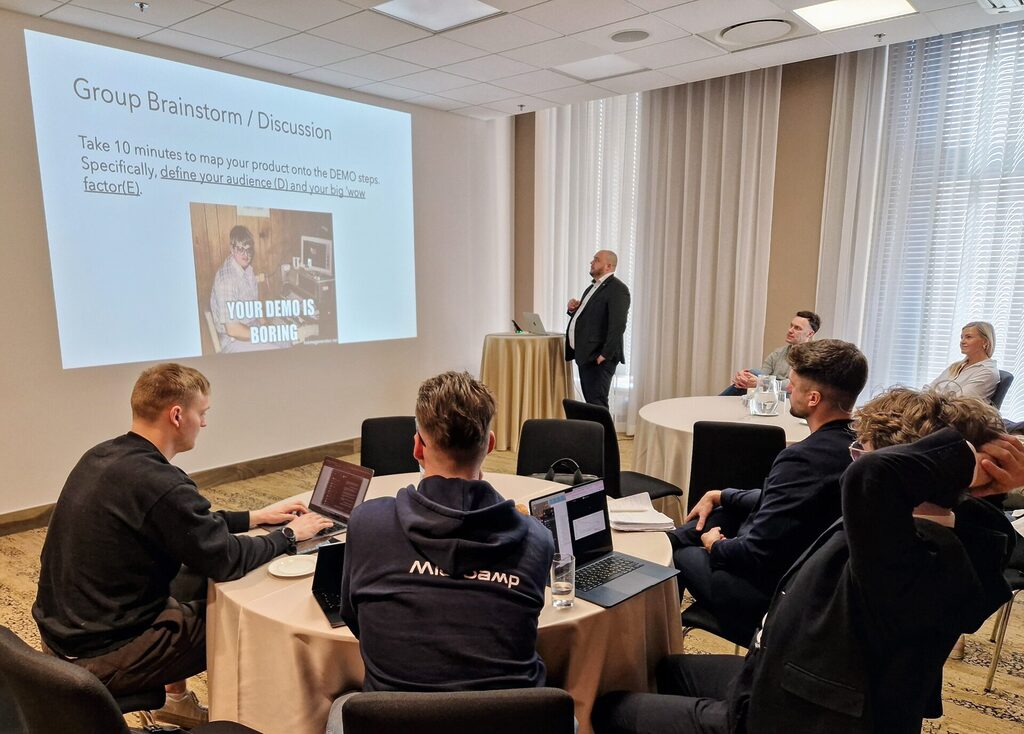
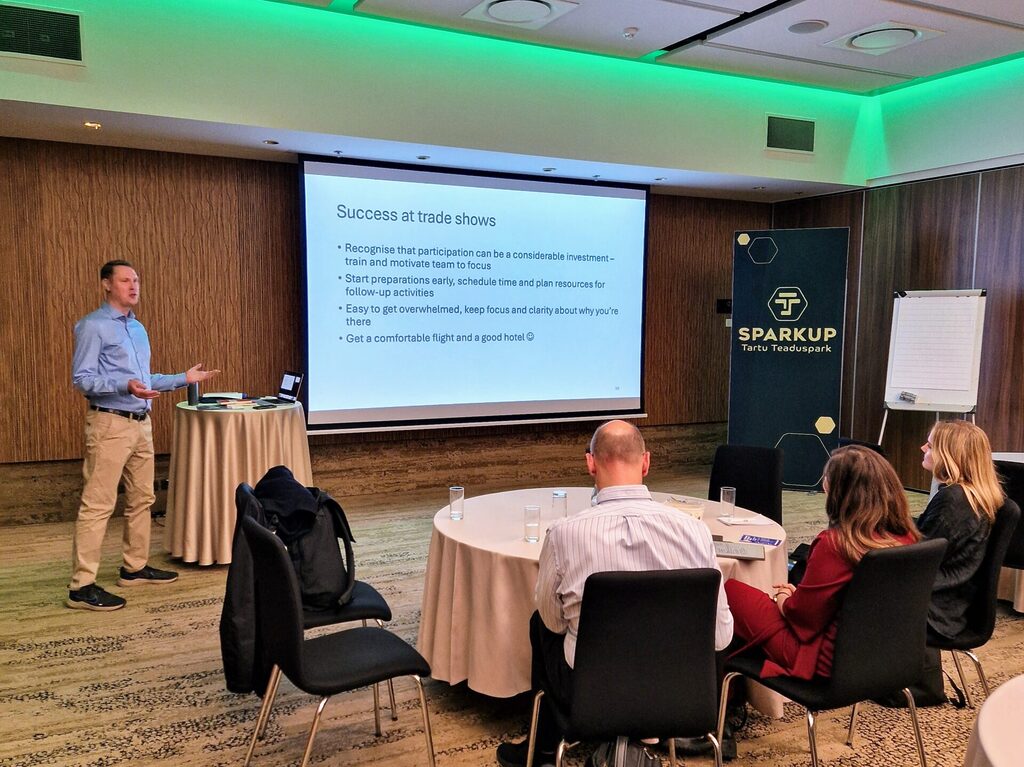
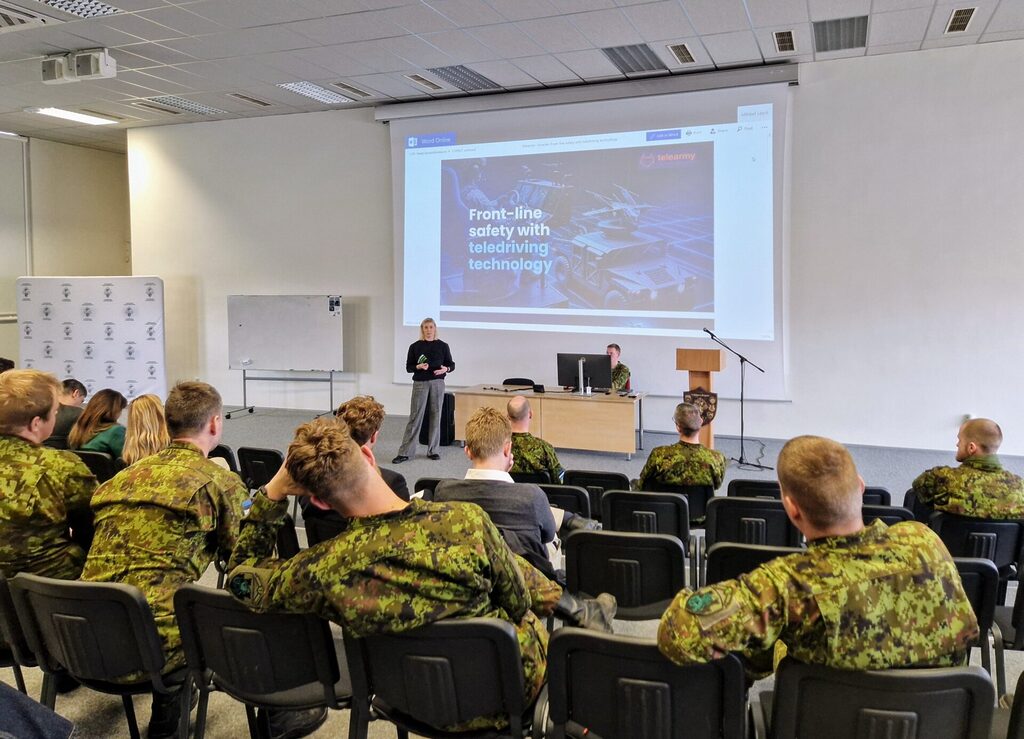
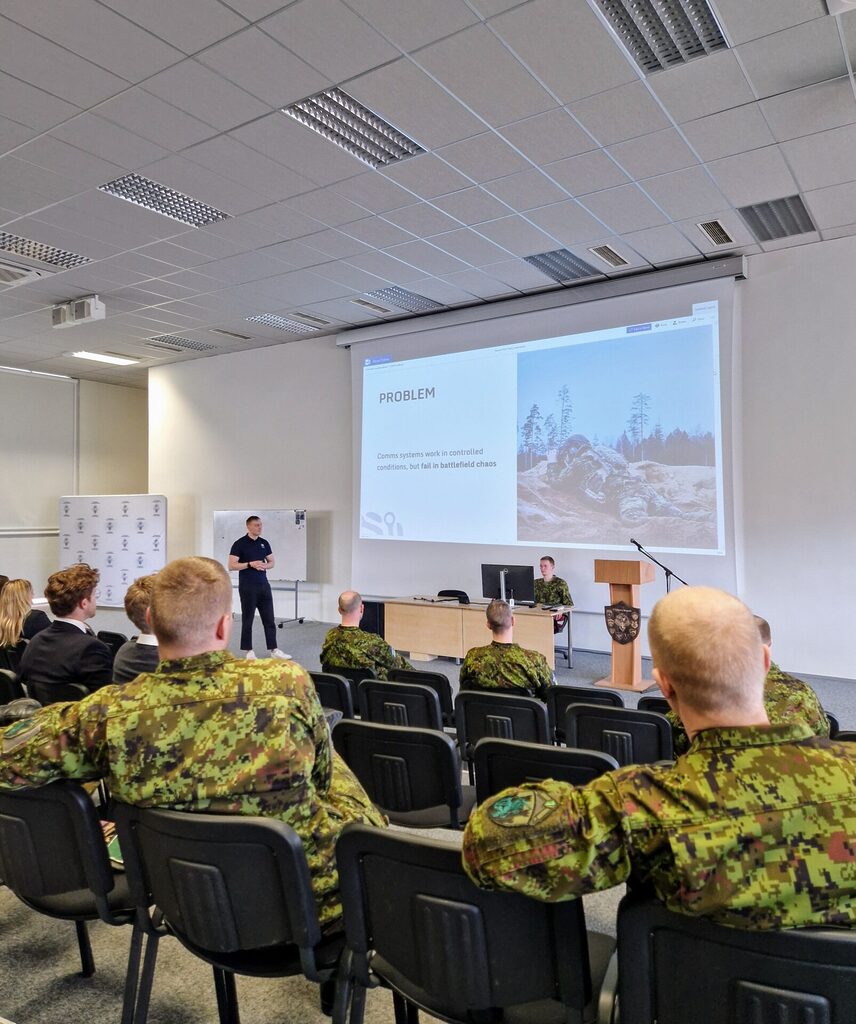
Startup Story: IS-Wireless X NATO DIANA Estonian Accelerator
IS-Wireless Liquid RAN (Radio Access Network) is a dual-use technology focused on rapid network restoration and the replication of damaged base stations anywhere. Liquid RAN allows the deployment of the cellular network on top of highly volatile computing infrastructure – a critical feature not yet achieved by contemporary RAN implementations.
To break it down further, IS-Wireless Liquid RAN is a technology that can be used both in everyday situations and in emergencies. It is called “Liquid” because it is highly flexible — if a base station is damaged, the network can quickly rebuild itself, restoring connectivity.
This is useful in crises (such as natural disasters or military situations), where restoring communications rapidly is critical. In normal times, it helps mobile operators build and run their mobile networks more efficiently with lower total cost of ownership (TCO), using less energy and saving money — especially when building a dense network.
Please briefly introduce some of the minds behind IS-Wireless.
The people leading IS-Wireless are CEO and founder Slawomir Pietrzyk, COO Kamil Pluskwa-Dąbrowski, and CTO Robert Cieloch.
Slawomir is an expert in wireless technologies and the author of the first book on Orthogonal Frequency Division Multiple Access (OFDMA), published in 2006. He holds a PhD from Delft University of Technology in the Netherlands.
Before joining IS-Wireless, Robert spent 18 years as a RAN expert at T-Mobile Poland S.A. Earlier in his career, he served as a Second Lieutenant (Platoon Commander) in the 11th Communications Regiment of the Polish Navy.
Kamil is an attorney-at-law (Warsaw Bar Association) whose areas of legal practice include telecommunications, e-commerce, trade, corporate law, intellectual property, among others. He previously served as CEO of the Polish Consumer Federation.
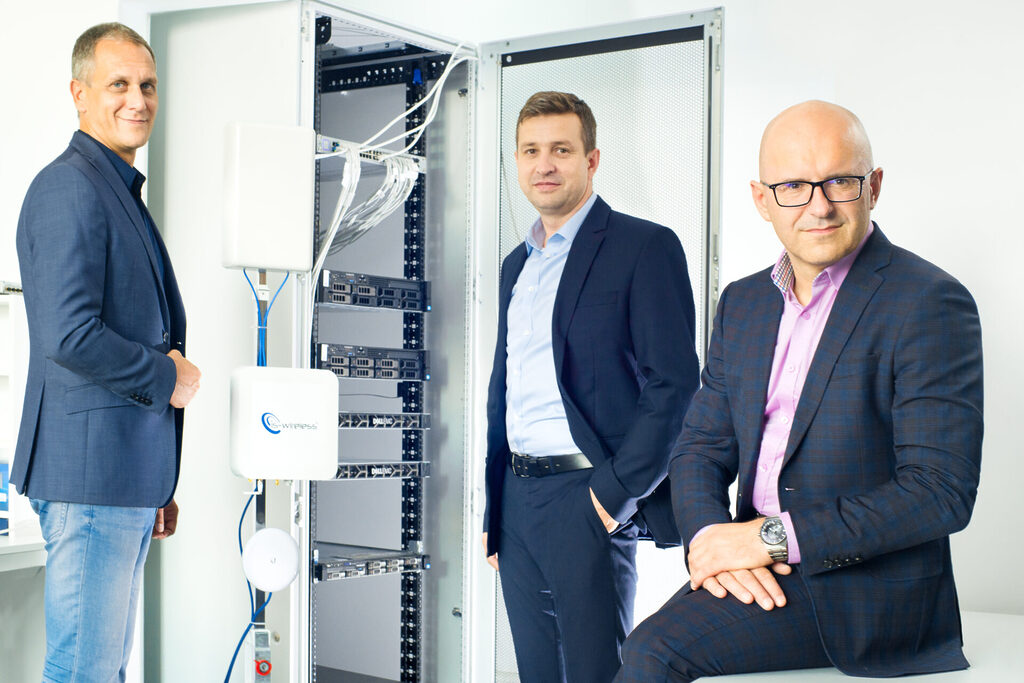
How was the startup idea born?
The company’s origins lie in training activities related to mobile communication technologies. IS-Wireless actively participated in the standardisation of LTE** and contributed directly to shaping the development of 4G. This hands-on experience gave us a clear view of the challenges and opportunities in wireless network implementation. Recognising 5G as the next major shift in mobile technology, IS-Wireless began working on its standardisation in parallel.
What have been your biggest challenges and obstacles so far?
The biggest challenge has been overcoming market resistance to Private 5G. Many customers still view Wi-Fi as sufficient and hesitate to adopt new technologies. Another major obstacle has been the slow uptake of open mobile networks by telecom providers, despite public support, which often results in longer project timelines. That said, change is happening, and awareness continues to grow.
What makes your technology a great dual-use solution?
As a dual-use technology, Liquid RAN can easily be applied to critical situations where such behaviour of RAN is vital: self-healing, rapid network restoration, efficient resource utilisation to minimise costs, and enhanced protection against cyberattacks and other threats. A cellular network is of utmost importance in critical situations and is therefore highly exposed to potential enemy attacks or natural disasters. This can result in network downtime and a lack of basic connectivity services.
In non-crisis situations, Liquid RAN enables significant savings in network deployment, operations, and energy consumption costs. The solution can be used, for example, by mobile network operators massively densifying their networks.
What differentiates IS-Wireless from the competition?
Our Liquid RAN technology – an advanced, open, and disaggregated radio network – is designed for extremely efficient use of communication resources. This results in lower network deployment costs and reduced energy consumption. Compared to competitors, our solution is significantly more disaggregated and distinctly non-monolithic.
Why did you apply to the NATO DIANA accelerator?
We applied to the NATO DIANA accelerator because we believe our technology, designed for mission-critical and disaster-response scenarios, aligns well with NATO’s security objectives. As a company from a NATO country, we also wanted to contribute to collective security and gain greater visibility within the alliance.
Where do you see your company in 12 months’ time? And in five years?
In 12 months, we see IS-Wireless having a strong market presence with multiple successful installations. In five years, we aim to scale globally, open offices in key markets, and become a leading provider of Private 5G solutions.
Who will be the next unicorn in Poland?
We certainly aspire to become one!
The Estonian accelerator is delivered by the Tehnopol Startup Incubator in partnership with Sparkup Tartu Science Park.
*OFDMA is a wireless communication technology that splits a signal into multiple smaller sub-signals, allowing several users to send and receive data at the same time on the same channel, which makes the network faster and more efficient.
**LTE (Long Term Evolution) is a 4G mobile network technology that enables fast and reliable wireless data transmission.
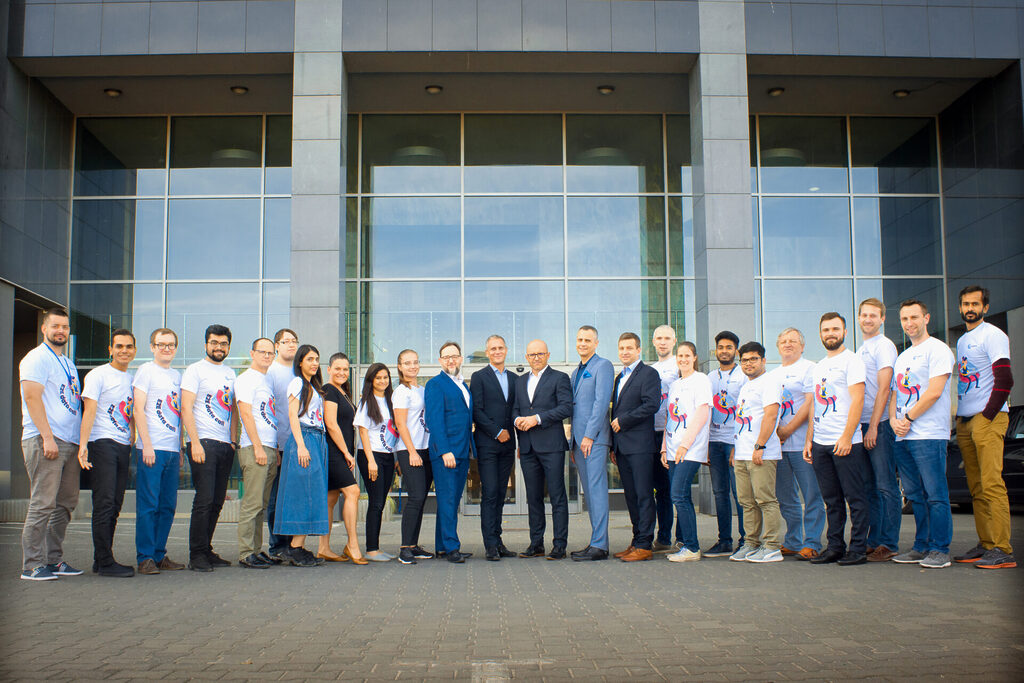
Four startups are developing innovative solutions for the film industry at the IDA Hub Film and Multimedia Accelerator
Four ambitious startups have kicked off their journey in the Tehnopol Startup Incubator’s Film and Multimedia Accelerator IDA Hub. This marks the beginning of the program’s third cohort.
The Film and Multimedia Accelerator focuses on multimedia, virtual and augmented reality, and related fields, supporting startups that are innovating in these areas. Participants are guided by top-tier mentors who provide direct access to key figures in the film industry, the market, and investors. This creates a unique opportunity to develop products or services in a sector where innovation and creativity meet high technology.
The program kicked off on April 7 in Jõhvi with a workshop “Business Model and Team,” led by software product engineer Kaspar Kallas, who also brings extensive knowledge in film production, editing, and AI.
The teams participating in this year’s program are:
- e-Axiom – Developing an AI-powered interactive multi-platform that generates real-time stories, animations, and dialogues based on viewer input. Instead of passively watching, children can influence how the story unfolds.
- Creative Industry Hub – A team from the Tallinn Black Nights Film Festival (PÖFF) working on two AI-based solutions: SUSI AI, which offers personalized recommendations and event navigation for festival visitors and professionals; and Creative Gate, a platform that helps Estonian creative industries find international partners and increase exports.
- Scenest – Creating a platform to help directors, location managers, and producers quickly and visually find the perfect filming locations. Scenest won the Film and Multimedia Accelerator TECH Bootcamp in February and you can read more about their story here.
- Smartisan – Developing a physical and digital modular studio solution that speeds up studio construction for films and commercials, improves quality, enables precise 3D previsualization, and supports reuse and flexibility in the production process.
You can find more information about the Film and Multimedia Accelerator here.
The activities of the Film and Multimedia Accelerator at the Tehnopol Startup Incubator are funded by the European Union.
Ten startups begin developing their ideas in the defence technology pre-accelerator
On Friday, April 4, the companies selected for the first round of the defence technology pre-accelerator were announced in Tapa. The pre-accelerator is aimed at deep-tech startups operating in the defence sector. The programme is jointly implemented by the Tehnopol Startup Incubator and the Sparkup Tartu Science Park.
The pre-accelerator supports startups whose ideas have been validated and who have an initial prototype, helping them further develop their solutions and test them in real-life environments. Participants benefit from training, mentoring, and networking opportunities, and are also prepared for future rounds of the NATO DIANA accelerator and the European Defence Fund.
The programme is jointly run by the Tehnopol Startup Incubator and the Sparkup Tartu Science Park – five companies are developing their solutions in Tallinn, and five in Tartu.
“Working with the NATO DIANA accelerator teams, we see that Estonian defence sector companies are innovative, and encouraging growth in this field is extremely important. Our goal is to support the potential of these companies and help them prepare for their next key steps. Technological solutions are in high demand in the defence sector, as rapid advancements in technology offer new opportunities to improve both responsiveness and preventive measures,” said Anne-Liisa Elbrecht, Head of the Tehnopol Startup Incubator.
“It is great to see so many smart teams in Estonia who want to contribute to national security – from demining robots to digital mapping solutions. Within the programme, we aim to explore how these solutions can best be integrated into the defence sector,” said Pirko Konsa, Member of the Management Board at Sparkup Tartu Science Park.
The following startups were selected for the pre-accelerator:
- Thistle OÜ develops and manufactures mobile anti-drone systems.
- Metamobilise offers a solution that significantly accelerates the development of shooting skills with small arms and makes training more engaging, realistic, and insightful.
- UnMarSys is developing unmanned surface vehicles (USVs) for maritime surveillance, monitoring, and defence.
- Asvel is working on a self-driving robot capable of automatically controlling an endoscopic camera during minimally invasive surgeries.
- Ratel Robotics is developing a modular unmanned ground vehicle (UGV) designed for defence and security challenges, focusing on autonomy, resilience, and rapid task-specific adaptability.
- Max Joule is creating next-generation battery systems based on advanced battery chemistry for specialised applications.
- Taara Robotics specialises in autonomous collaborative robots and environmental mapping.
- Falconers is developing next-generation remote sensing AI and hardware for Earth digitisation.
- Milmech Systems is creating a fast, cost-effective, remotely operated demining device to help save lives in conflict zones.
- C2Grid provides AI-based instant 3D situational awareness solutions generated from video footage.
The pre-accelerator programme offers participants a €5,000 grant, an in-depth training programme led by experienced experts, and the opportunity to collaborate with an extensive mentor network. The programme culminates in a demo day, where the progress and international scaling potential of the projects will be evaluated.
The pre-accelerator is implemented by the Tehnopol Startup Incubator and the Sparkup Tartu Science Park. The programme is funded by the Ministry of Defence and supported by the Ministry of Economic Affairs and Communications.
How to find your place in a foreign market? Inspiring stories from Estonian companies
Getting started with exports can initially seem daunting – what is the right market for my company, how do I find partners, and how do I assess our readiness? These are exactly the kinds of questions the export-focused training programme BSR Go-abroad helps Estonian entrepreneurs answer. Three different companies shared their experiences and the progress they made thanks to the programme’s practical approach.
A clear plan for starting exports
Claricy (pictured: the Claricy team) is developing an innovative financial technology called IRIS-X, which uses psychological analysis to understand people’s financial behaviour and offer them personalised financial advice. Although the company had previous international collaboration experience in IT and digital transformation, they hadn’t worked on exporting new technology before.
“BSR Go-abroad stood out right from the start – even the pre-selection interview offered valuable guidance and helped assess our suitability. The trainings were practical and systematic – we were able to immediately create our export strategy and conduct market analysis,” said Johanna Stina Haar, founder of Claricy.
By the end of the programme, their previously vague vision had been replaced with a clear step-by-step plan for entering export markets.
Confidence to experiment and learn
Mailabl is building a platform that connects workflows, data, and processes in real-time to help shape smart cities. Until now, the company had focused on the domestic market, though the ambition to expand internationally had long been there. While some collaboration attempts had been made with neighbouring Latvia, they had not produced results.
“BSR Go-abroad was an invaluable experience – it wasn’t just a series of lectures but an intensive, hands-on learning journey. We heard how even large corporations have made mistakes and learned from them, which gave us the confidence that we, too, have the right to experiment and grow,” said Indrek Saarnak, CEO of Mailabl.
During the programme, the team’s understanding of what exporting entails improved significantly, and they honestly re-evaluated their readiness. While they initially rated their preparedness at 5 out of 10, by the end of the training they realised they still had a long way to go – but the path ahead was now much clearer.
An international network
Sol Navitas develops and manufactures solar-powered ventilation systems. So far, the company has exported to Finland, Spain, and Uzbekistan – with Finland being the most successful market. Now, their sights are set on Sweden, Norway, and Spain again.
“I was impressed by the programme’s practicality and quality. The participants were motivated and the trainers true experts in their field. For example, we learned how to use AI tools for market research and to define target markets,” said Margus Kullerkupp, CEO of Sol Navitas.
Alongside the knowledge gained, the international network was also a major asset: “Companies from different countries took part in the programme, which allowed us to immediately make connections and test our export ideas in real target markets.”
The BSR Go-abroad programme proves that companies don’t need to wait until everything is perfect to enter foreign markets – what matters most is having a clear plan, a willingness to learn, and the courage to take that first step. Its practical focus, tailored approach, and use of real-world examples truly set this programme apart.
If your company is looking to start exporting and would like to join the programme, get in touch at maarit.jalakas@tehnopol.ee.
BSR Go-abroad is supported and co-funded by Interreg Baltic Sea Region.
The Space Agency’s Business Incubator is looking for fresh technology and space-related business ideas
Although space technology might seem intimidating to an outsider, Estonian companies have opportunities to develop businesses in the sector and achieve success. Until May 8th, applications are open for the European Space Agency’s business incubator (ESA BIC) in Estonia, where you can receive development support for bold ideas and make valuable international connections with other European space companies.
Even though we don’t think about space on a daily basis, many everyday products that we now take for granted originated from space technology development since the 1960s—such as wireless headphones, scratch-resistant glass, home water purification systems, memory foam, solar panels, freeze-dried food, vacuum packaging, and more. Space technology is also a part of our daily lives through dozens of satellites that enable GPS and navigation apps, internet connections, weather forecasts, bank transfers, phone calls, and TV and radio connections.
Space technology is a key driver in the tech industry and business innovation, making its development and support beneficial for any economy. Although Estonia is not historically a spacefaring nation, Estonia became a full member of European Space Agency (ESA) 10 years ago. Two years later launch ESA Business Incubation Centre (ESA BIC) Estonia was launched. Since then, the accelerator is open to startups with innovative ideas for using space technology or developing applications for new products and services in non-space environments.
ESA BIC Estonia supports five space startups each year
ESA BIC Estonia is part of the world’s largest space incubator network including 32 space business incubators in 90 locations across Europe. So far, the network has supported the creation and development of more than 1,800 space tech startups.
Twice a year, five companies are selected into the Estonian accelerator program. They receive up to €60,000 in non-equity funding for product development and IP protection, as well as mentoring and business development support.
Over the past 20 years, 32 companies have participated in the ESA BIC Estonia incubator, now employing over 200 people. The incubator has helped launch companies such as Crystalspace, whose Moon cameras were sent to the Moon on a NASA mission; Spaceit, with a cloud-based satellite management system; KappaZetta, which provides remote sensing solutions for precision agriculture; Hepta Airborne, offering data-based electricity line monitoring systems, and many more. Last year, Right Step, which focuses on bones in zero gravity, became the first Estonian company selected for the SciSpace CORA Parabolic Flight program. Altogether, graduates of the program have raised €58 million in funding, and one surpassed €1 million in annual revenue last year.
ESA BIC Estonia’s consortium includes Tartu Science Park, Tehnopol, the cities of Tallinn and Tartu, the University of Tartu, and TalTech.
Most important—international connections
Kristiina Libe, Deep-Tech Project Manager at Tehnopol, notes that development cycles for space technology ventures—like other deep tech fields—are long, making it harder to attract investors and making support mechanisms more vital.
“While ESA BIC’s €60,000 support may not seem large given the capital intensity of the field, the real benefit of participating in the incubator is the connections – participants gain access to the ESA BIC alumni network,” she explains. Program participation also serves as a quality label, helping Estonian space startups find global partners.
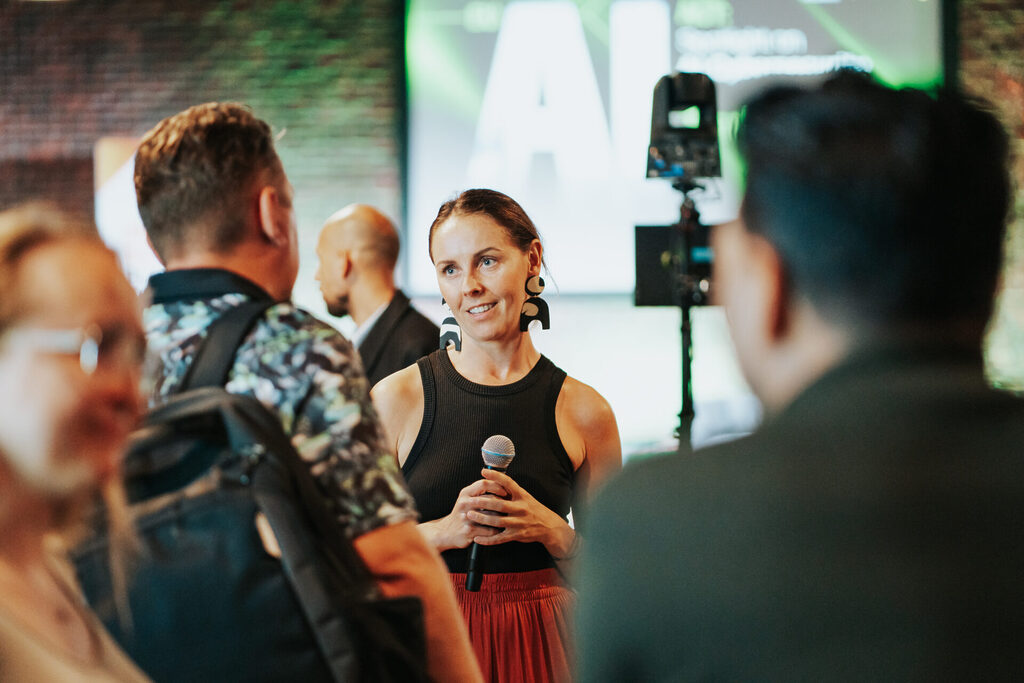
“Taking part of ESA BIC is the first step to validate the idea and then move into follow-up programs at ESA and EUSPA,” encourages Sven Lilla, Space Sector Lead at Tartu Science Park.
According to Jaanus Vahesalu, Head of Tallinn’s Entrepreneurship Center, joining ESA’s acceleration program opens up numerous opportunities for Estonian companies, including access to top-tier scientific and technological expertise and supply chains, as well as raising product value by applying space technologies.
“While city residents may not feel it directly, space technologies are key to making cities smarter, cleaner, and more efficient. Satellite-based data enables better urban planning, optimized mobility, real-time environmental monitoring, safer living environments, and more sustainable energy management,” adds Vahesalu.
Participants only have praise for ESA BIC Estonia
Marek Alliksoo, CEO of SkyCorp Technologies, says ESA BIC was the only useful incubator over the years that allowed them to develop their IP portfolio and file their first patent.
“We didn’t even see ourselves as a space tech company at first, but we became the first incubatee to start direct negotiations with ESA, win a contract, and with their ongoing support, develop our business areas, networks, and know-how,” he shares.
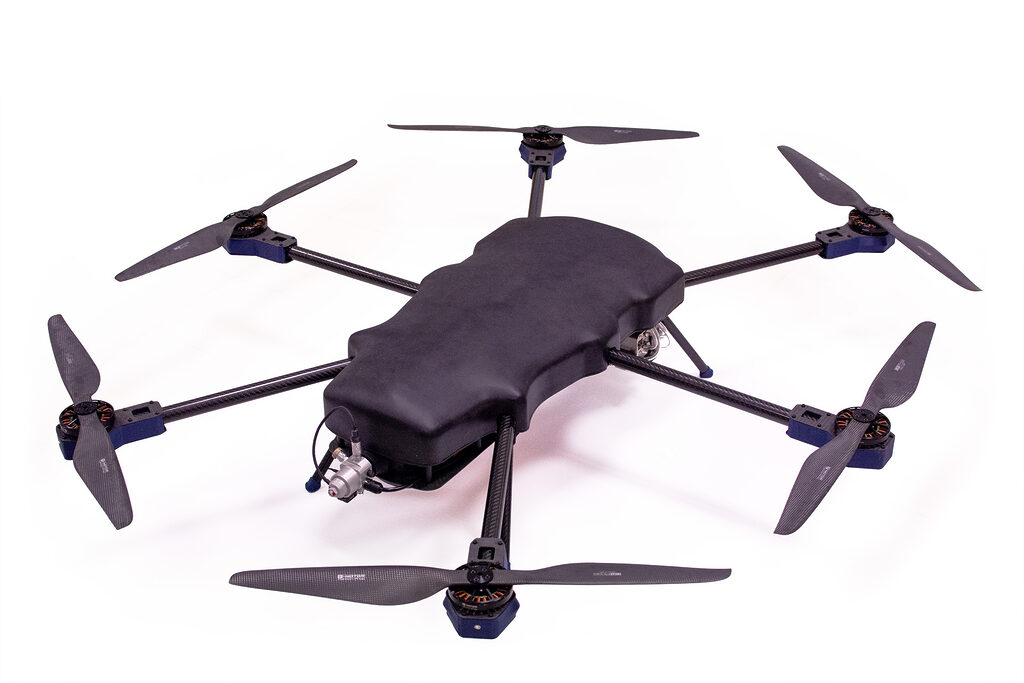
Strong international collaboration
Given Estonia’s small space sector, local experts are few and often very busy. On the other hand, Estonian space startups look far beyond the country—mainly to the U.S.—making mentors with international experience and global networks crucial for support.
One of the program’s external mentors is aviation pilot Shareef Al Romaithi, who has collaborated with NASA in the field of spaceflight. He sees great potential for cooperation between Estonia and the United Arab Emirates (UAE).
“Estonia is known for its expertise in digital solutions, cybersecurity, and AI, which are fields that are becoming increasingly relevant in space technology. The UAE, on the other hand, is investing heavily in its space program, with major initiatives like the Emirates Mars Mission and lunar rover.,” says Romaithi.
One great example of collaboration is Madari Space, a UAE-based space company that has partnered with Tehnopol, Estonia’s leading science and business park. Their goal is to support Estonian deep-tech startups scale internationally, including in the space sector. This kind of partnership can be a model for future cooperation.
What trends are driving the development of the space sector?
According to Romaithi, several trends are shaping the future of space tech. First, AI and automation are playing an increasingly crucial role, improving mission efficiency and real-time decision-making in space operations. AI-driven satellite data analysis is revolutionizing remote sensing applications, including Earth observation.
Another major development, Romaithi says, is in advanced communications. Space-based 5G networks, quantum encryption, and laser communications are making data transfer faster and more secure, which is essential for deep space missions and global connectivity. Furthermore, reusable launch vehicles have been a game-changer, significantly lowering the cost of access to space. “Companies such as SpaceX have already demonstrated the potential, and we’re seeing more players enter the market with similar technologies. As a result of these advancements, we are witnessing a rise in the number of small satellites, including CubeSats and NanoSats, allowing for more cost-effective and flexible solutions for Earth observation, IoT applications, and even interplanetary missions,” Romaithi adds.
A newer but rapidly growing trend is data centers in space. With the exponential growth of data, the ability to process and store information in orbit reduces dependence on Earth-based infrastructure while improving data security and latency. This could be a huge shift in how we manage global data in the future.
“It is important to realize that the next big leap in space exploration and commercialization will not come from just one country, I will be achieved through global collaboration.” Romaithi comments. “Estonia and the UAE both have ambitious visions for the future, and by working together, they can develop cutting-edge solutions that have a real impact. Whether it’s AI-driven space applications, cybersecurity, or next-generation satellite technologies, there is massive potential for both nations to grow together in this sector.”
Read more about ESA BIC Estonian accelerator: esabic.ee
Startup Story: Microamp x NATO DIANA Estonian Accelerator
Microamp provides high-performance mmWave* connectivity for robust, secure, and redundant streaming of massive volumes of data in real time. Their solution enables the rapid deployment of a flexible, uplink-heavy 5G mmWave private network—ideal for applications requiring the uplink of large data volumes, such as live video analytics from multiple mobile, high-resolution wireless cameras.
The minds behind Microamp are CEO Dawid Kuchta and CTO Marcin Górlaczyk. Dawid brings 10 years of experience across commercial and military entities, having participated in R&D projects focused on the development of RF systems. Marcin has another 10 years of experience as one of Poland’s leading designers of base station amplifiers for mobile networks. He has worked in both Poland and the USA, including on military R&D projects such as “Wisła”.
- How was the startup idea born?
Marcin and I (Dawid) met at the Warsaw University of Technology over 15 years ago and have been best friends ever since. In 2020, we defended our PhDs on 5G and military power amplifiers, following years of research at top institutions in Singapore, the USA, and Poland. With deep expertise and a shared passion for innovation, we decided it was time to make a real impact. That’s how Microamp was born—a company set to shake up the telecom market by pushing the boundaries of wireless technology and delivering next-generation network solutions.
- What has been your biggest challenge/obstacle/largest win so far?
Biggest challenge – Finding our first paying industrial customer.
Obstacle – The telecom market is relatively closed, which makes global scaling more difficult.
Largest win – Securing a proof of concept (PoC) with one of the world’s largest telecom operators.
- What differentiates your company from the competition?
What differentiates us from the competition is our superior network performance, leveraging the mmWave spectrum to deliver multi-gigabit throughput and near-zero latency—perfect for streaming massive volumes of data in real time.
Our solution is end-to-end, highly portable, and can be deployed within hours, making it ideal for emergency communication.
There is a market gap for a flexible, EU-based provider offering end-to-end mmWave private networks, not only for large enterprises but also for mid-tier companies.
- Why did you apply to the NATO DIANA accelerator?
We applied to the NATO DIANA accelerator to gain support in developing our 5G mmWave technology and to connect with industry experts. The programme offers a valuable opportunity to test and scale our solution in a structured environment.
- Where do you see your company in 12 months? How about in 5 years?
The NATO DIANA accelerator provides an ideal framework for testing and scaling our solution. We believe DIANA’s support will accelerate our growth and help enhance defence capabilities through advanced wireless systems.
- Who will be the next unicorn in Estonia or in your home country of Poland?
Well, we’re fairly confident that Microamp will be the next unicorn in Poland! With our innovative 5G mmWave tech, we’re definitely on the right track—just wait and see! 😉
- Which book would you recommend to other startup founders?
Zero to One by Peter Thiel is a must-read for any startup founder. It’s about creating truly innovative products and building businesses that go from “zero to one”—transforming an idea into something groundbreaking.
The Estonian accelerator is implemented by Tehnopol Startup Incubator together with Sparkup Tartu Science Park.
* mmWave refers to a high-frequency band of the electromagnetic spectrum (typically 24–100 GHz) that enables ultra-fast wireless communication over short distances.

